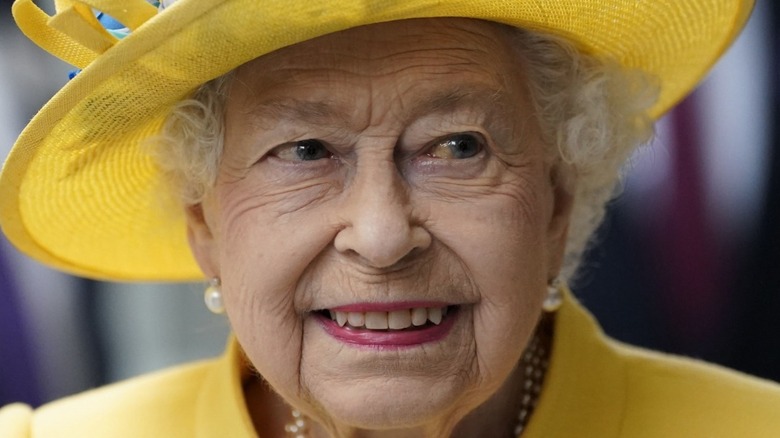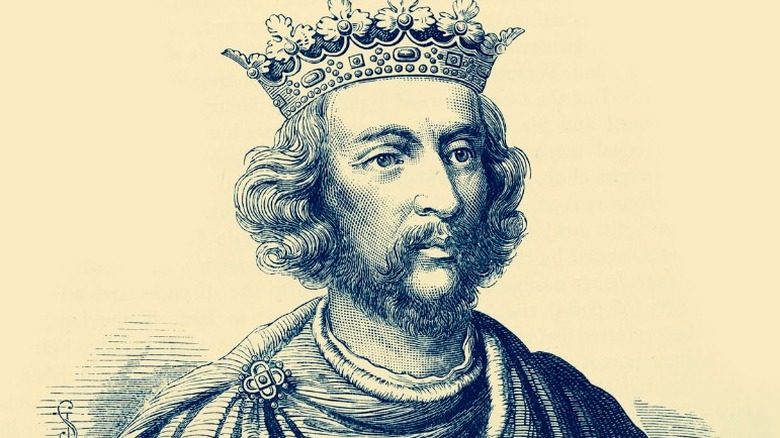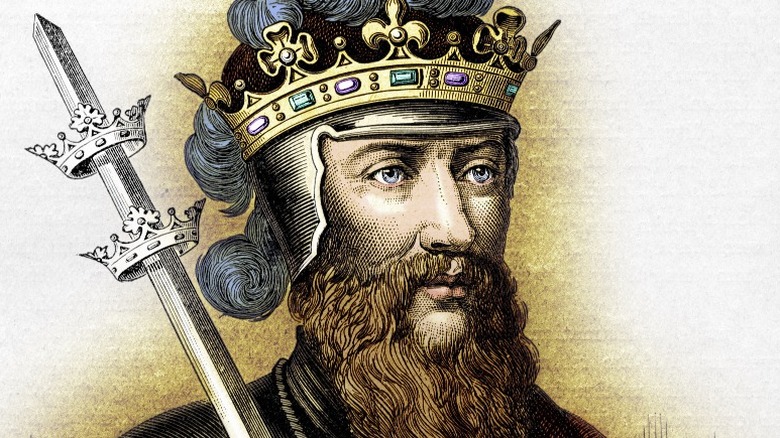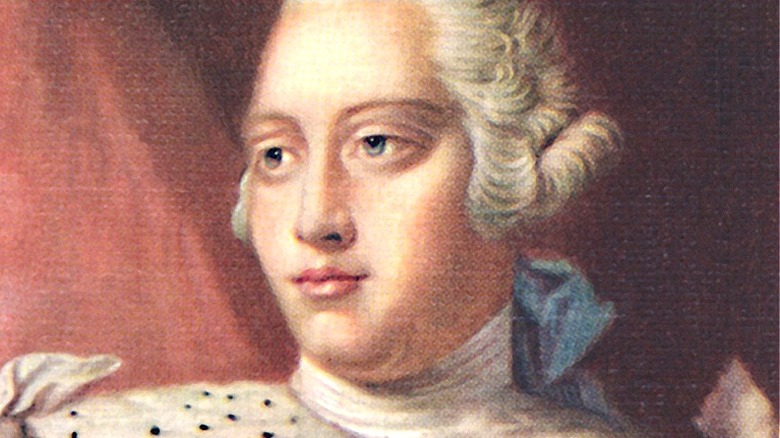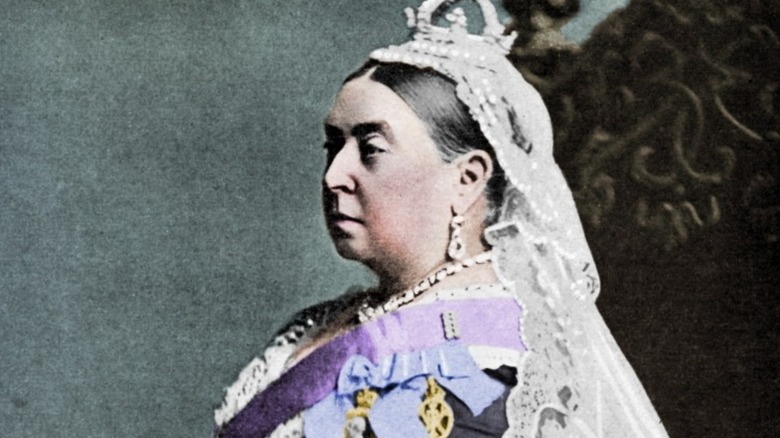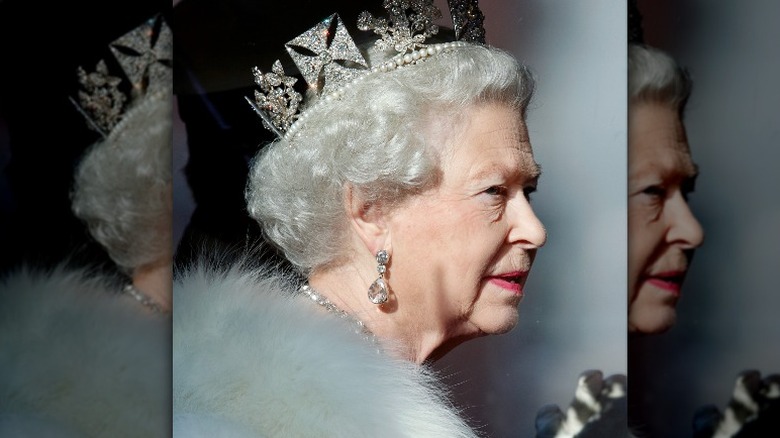Which British Monarchs Have Celebrated A Golden Jubilee?
One of the most famous and fascinating entities on the planet is that of the British Royal Family. Their rule over what is now known as The United Kingdom of Great Britain and Northern Ireland dates back over 1,200 years and spans 37 generations, according to All That's Interesting. In that time the British crown has been worn by many, as a result of war, illness, abdication or, in some cases execution.
While there have been instances in British history when who was in power seemed to change every five minutes, there were also times of extended reigns. When a ruler achieves a certain number of years on the throne, there is often a celebration known as a jubilee. There are different levels of jubilee — the present monarch, Queen Elizabeth II, has reigned longer than anyone else in English history. She marks her platinum jubilee, celebrating 70 years on the throne, next month. Another jubilee with great significance, and more common in history, is the golden jubilee, which commemorates a monarch's 50 years wearing the crown.
In a land as old as England, some history has been lost. Working from the known accounts and records, however, it's clear that only a handful of British sovereigns have achieved the golden milestone.
King Henry III
Henry III of England was born October 1, 1207, the son of England's notorious King John, who is believed to have inspired the "evil" King (Prince) John of the Robin Hood legends. When Henry was only 9 years old, his father died in the middle of a war, and his claim to the throne was under attack. Despite the fact that a very real threat to his rule existed, Henry III was crowned King of England on October 28, 1216.
Henry's reign was filled with many criticisms and only a few bright spots. According to World History, he developed a reputation for being both easily swayed and indecisive, as well as showing a propensity for giving land to foreigners. On the flip side, Henry is also now recognized as a patron of the arts, for his contributions to England's architecture,and for founding three of the original colleges at Oxford University.
Though he took the throne during a tumultuous time, and despite the fact that he did not have the best reputation, he managed to become one of England's longest-ruling monarchs. His reign lasted 56 years, and while it is not clear how he celebrated the 50-year milestone, he was one of the first English rulers to achieve it.
King Edward III
The next British ruler to spend 50 years on the throne (per World History) was Edward III. Edward was born November 13, 1312 to King Edward II and Isabella of France. At the age of 14, he was crowned king, with his mother acting as regent after she and her lover had forced Edward II to abdicate, imprisoned him, and then murdered him.
Though his mother had been able to manipulate her way to power and depose his father, Edward III was not so easily controlled. Three years after being crowned, he avenged his father's death by imprisoning and then executing his mother's lover, and banishing his mother to confinement. He then used his newly found power to provide stability for his kingdom.
According to Royal, Edward was an inspiring leader and a good soldier. History reports that he led his country to many initial victories during The Hundred Years' War, and provided heirs for the family line. However, toward the end of his reign he increasingly fell out of favor. He reached his 50th year as king in 1377, which unfortunately was the same year in which he passed away from a stroke. There doesn't seem to be much information regarding how or if he celebrated his anniversary, but he still managed to hang on to his power for a remarkably long period of time.
King George III
Arguably one of the most infamous British monarchs in history is good old King George III. According to Biography, he was born prematurely on June 4, 1738, and was not expected to live, much less become one of the longest-ruling kings in British history. George inherited the title of Duke of Edinburgh when he was 12, and when he was 22 he was crowned king, after the death of his grandfather.
King George ruled for a staggering 59 years, and presided over many conflicts, from the religious to the political. One of the most well-known events of his reign (per Britannica) was undoubtedly the American Revolution. There were multiple things that led up to the war, but in the end, the American colonies defeated the British crown and became their own country.
Though he lost the American colonies and became famous for his battle with mental illness (via History Extra), George III managed to become the longest-ruling monarch in British history until Queen Victoria's rule in the late 19th century. George III's reign is normally designated as the first to have a formal celebration of a Golden Jubilee. It was celebrated in 1809 with a private service in Windsor, along with a festival and fireworks show at Frogmore (per Royal). Additionally, there was a service of thanksgiving and a celebratory dinner held in London.
Queen Victoria
It was not until George III's granddaughter, Victoria, became queen that an English ruler held the throne for longer than 50 years. Queen Victoria was born May 24,1819, and lost her father before she was even a year old. Though she remained small in stature her whole life at 4 feet, 11 inches, she was a force to be reckoned with.
Victoria was crowned Queen of England at the age of 18, following the death of her uncle, William VI. During her 63-year rule, Victoria became one of the most powerful rulers in the world. According to Biography, her reign saw incredible advances in industry, science, and the size of the British empire. Her children also helped strengthen her standing, particularly in Europe, due to the fact they were married off to various royal families across the continent.
Queen Victoria celebrated her golden jubilee in 1887 with a two-day affair, including a massive banquet with the royalty of Europe in attendance. In addition to this elaborate feast, she was part of a procession through the streets of London, before having another large dinner and a fireworks display.
Queen Elizabeth II
While it appeared that a 63-year reign would be a record nearly impossible to beat, that would change when Elizabeth II came to power. Biography relates that Elizabeth was born April 21, 1926, and like her great-great grandmother, Victoria, she was not expected to ever take the crown. However, upon the abdication of her uncle and then the death of her father in February 1952, Elizabeth was crowned Queen of England on June 2, 1953.
Elizabeth II has been credited largely with the modernization of the monarchy and has made the Royal Family more accessible to the common people. Though her role is a lot more symbolic these days, she is one of the most revered and respected figures in the world today.
In 2002, Queen Elizabeth reached the 50-year milestone and thus celebrated her golden jubilee. She celebrated many different ways that year, and included tours across the British Commonwealth, a jubilee church service, ceremonial procession, and a pop concert at Buckingham Palace (per Royal). Additionally, there was a massive fireworks presentation and the lighting of the National Beacon. Queen Elizabeth also celebrated her diamond jubilee, marking 60 years, in 2012, and surpassed the length of her great-great grandmother's rule in 2015. As of 2022, Queen Elizabeth II is the longest-reigning monarch in the history of the United Kingdom.
